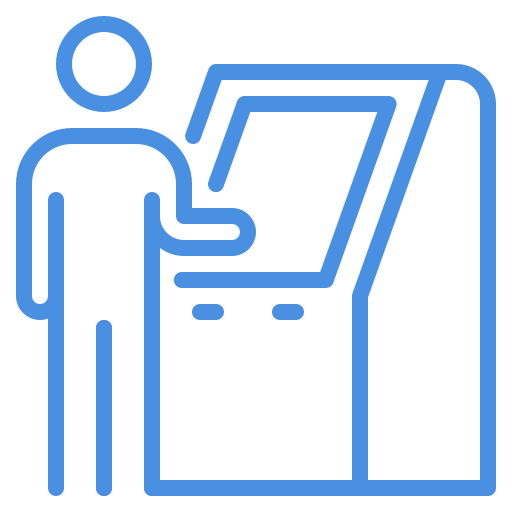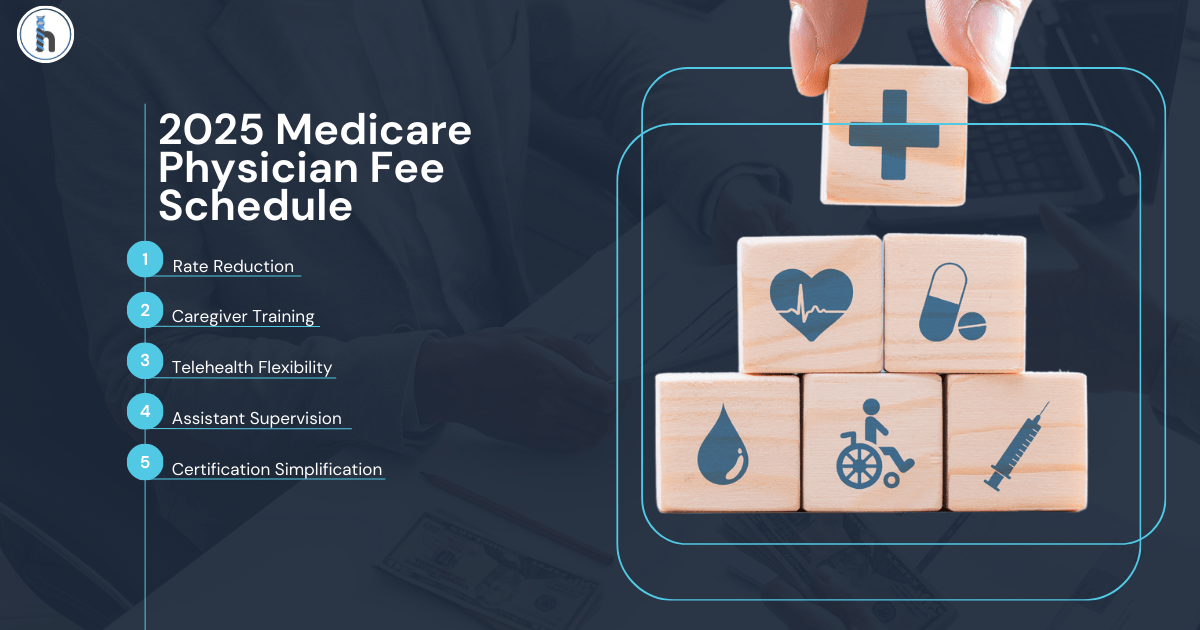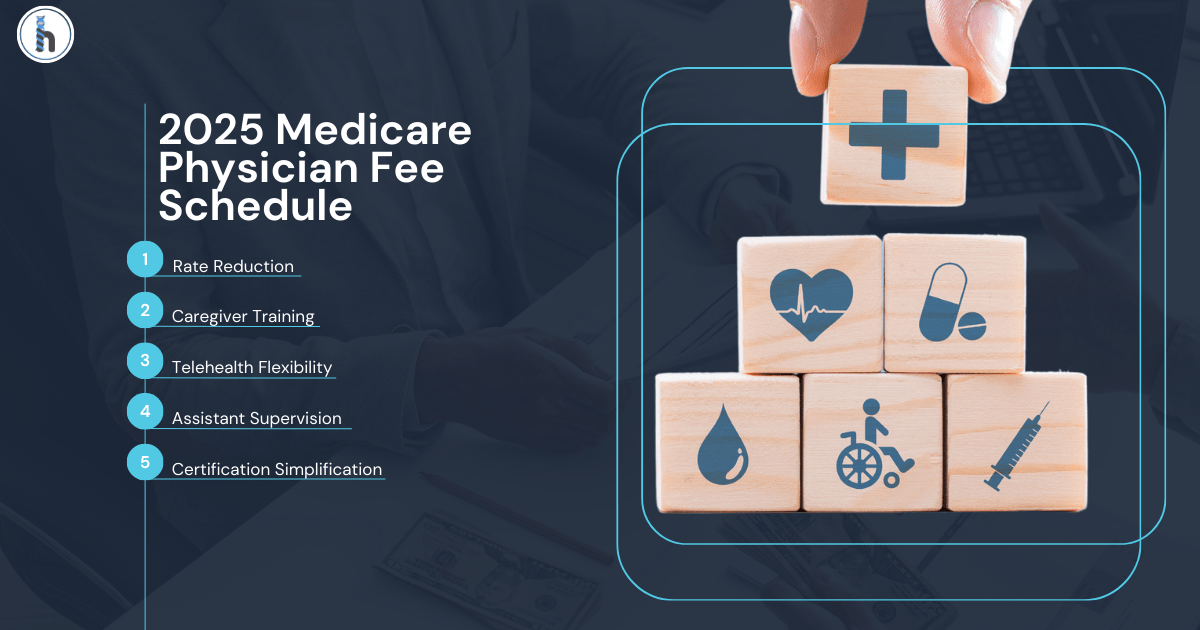Physical Therapy Medicare Billing Guidelines 2025
Stay updated with the 2025 Medicare billing guidelines for physical therapy, including changes to payment rates, supervision requirements, therapy caps, telehealth, and quality reporting. Learn how to adapt your practice, streamline compliance, and ensure financial stability while providing exceptional patient care.

As the healthcare landscape evolves, staying informed about the latest Medicare billing guidelines is essential for therapy practice owners. The 2025 updates bring significant changes that can influence your practice’s operations, finances, and compliance. From payment rate adjustments to expanded telehealth options and updated supervision requirements, these changes offer both challenges and opportunities. This guide provides a detailed breakdown of the Medicare updates for 2025 and strategies to adapt effectively.
Adjusted Payment Rates
The Medicare conversion factor for 2025 has decreased to $32.35, down from $33.29 in 2024. This 2.83% reduction continues the trend of declining reimbursement rates, creating pressure on therapy practices to optimize financial planning.
Key Considerations:
-
- Operational Adjustments: Evaluate your budget to accommodate the reduced reimbursement rates.
-
- Service Efficiency: Streamline workflows and assess cost-effective methods to maintain profitability without compromising patient care.
Enhanced Supervision Flexibility
Medicare now allows general supervision for Physical Therapist Assistants (PTAs) and Occupational Therapy Assistants (OTAs) under Medicare Part B in private practice settings. This adjustment aligns with state licensure laws and is especially advantageous for clinics in rural or underserved areas.
What General Supervision Means:
-
- The supervising therapist does not need to be physically present but must be available via telecommunication.
-
- This flexibility supports greater autonomy for assistants and improves patient access to therapy.
Action Steps for Compliance:
-
- Update supervision protocols to reflect this change.
-
- Educate your staff about their roles and responsibilities under the new supervision standards.
Increased KX Modifier Threshold
The KX modifier indicates that services exceeding the annual therapy cap are medically necessary. For 2025, the therapy caps have increased to:
-
- $2,410 for combined physical therapy and speech-language pathology services.
-
- $2,410 for occupational therapy services.
These adjustments account for inflation and economic factors, allowing more therapy sessions without requiring extensive additional documentation.
Tips for Effective Use of the KX Modifier:
-
- Ensure that all therapy beyond the threshold is well-documented to avoid denials.
-
- Use electronic systems like HelloNote EMR to track therapy cap usage and ensure compliance.
Telehealth Opportunities and Limitations
Telehealth remains an integral part of therapy services in 2025. While physical and occupational therapists still cannot provide audio-only telehealth, other telehealth modalities remain permissible, enhancing accessibility for patients in remote areas.
How to Optimize Telehealth:
-
- Invest in Telehealth Technology: Use platforms that offer secure video consultations and integrate seamlessly with your EMR system.
-
- Staff Training: Ensure your team is proficient in delivering effective care via telehealth.
-
- Patient Awareness: Educate patients on how telehealth can fit into their care plans.
Updates to the Quality Payment Program (QPP)
The Quality Payment Program (QPP) continues to evolve, with new quality measures added to the Merit-based Incentive Payment System (MIPS) Value Pathway (MVP). These measures aim to improve patient outcomes while reducing administrative burden.
Highlights for 2025:
-
- New quality measures focus on functional outcomes and patient satisfaction.
-
- Practices are encouraged to integrate these measures now, as full MVP adoption is expected by 2029.
Implementation Tips:
-
- Use data tracking tools within your EMR to monitor quality metrics.
-
- Begin aligning your practice with MVP requirements to stay ahead of the transition.
Practical Strategies to Adapt to 2025 Changes
Navigating the latest Medicare updates requires strategic planning and proactive measures. Here’s how to ensure compliance and optimize operations:
Financial Planning
-
- Adjust budgets to account for the reduced conversion factor.
-
- Explore additional revenue streams, such as cash-based services or wellness programs, to offset lower reimbursement rates.
Supervision Protocols
-
- Align your policies with the new general supervision standards for PTAs and OTAs.
-
- Incorporate telecommunication systems to support remote supervision effectively.
Documentation Practices
-
- Maintain thorough records for all services exceeding the KX modifier threshold.
-
- Leverage EMR tools to automate compliance checks and reduce administrative workload.
Telehealth Integration
-
- Expand telehealth services where feasible, focusing on underserved and remote patient populations.
-
- Invest in user-friendly platforms to ensure a seamless telehealth experience for both staff and patients.
Quality Reporting
-
- Familiarize your team with the new quality measures under QPP.
-
- Use analytics and reporting features in your EMR to track and report data accurately.
What These Changes Mean for Therapists
These updates present both challenges and opportunities for therapy practices. While the reduced payment rates may strain finances, the increased flexibility in supervision and expanded telehealth options can enhance service delivery and patient access.
For example:
-
- A rural clinic may benefit significantly from general supervision allowances, enabling PTAs and OTAs to serve patients more independently.
-
- Practices leveraging telehealth can tap into new patient markets and provide continuity of care despite geographical barriers.
Leveraging Tools Like HelloNote EMR
Adapting to Medicare’s 2025 updates is easier with the right technology. HelloNote EMR offers:
-
- Automated Compliance Checks: Track KX modifier usage and ensure all documentation meets Medicare standards.
-
- Integrated Telehealth Features: Provide seamless virtual care while maintaining accurate records.
-
- Quality Reporting Tools: Simplify tracking and submission of QPP quality measures.
Conclusion
The 2025 Medicare billing updates highlight the importance of adaptability and strategic planning in therapy practices. Changes to payment rates, supervision requirements, therapy caps, telehealth flexibilities, and quality measures all require thoughtful adjustments to ensure compliance and financial stability.
By staying informed and leveraging advanced tools like HelloNote EMR, therapists can navigate these changes confidently while continuing to deliver exceptional care. Embrace the opportunities these updates bring and position your practice for long-term success.



































